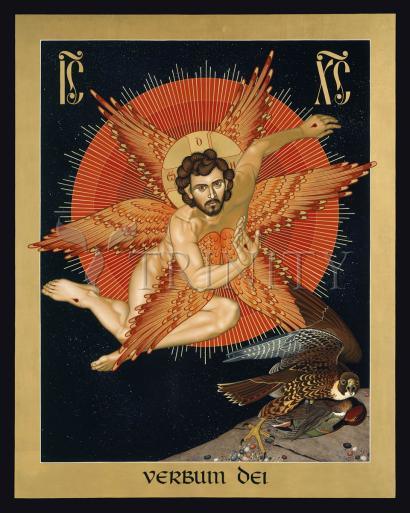Collection: Seraphic Christ

-
Sale
Wood Plaque Premium
Regular price From $99.95 USDRegular priceUnit price per$111.06 USDSale price From $99.95 USDSale -
Sale
Wood Plaque
Regular price From $34.95 USDRegular priceUnit price per$38.83 USDSale price From $34.95 USDSale -
Sale
Wall Frame Espresso
Regular price From $109.95 USDRegular priceUnit price per$122.17 USDSale price From $109.95 USDSale -
Sale
Wall Frame Gold
Regular price From $109.95 USDRegular priceUnit price per$122.17 USDSale price From $109.95 USDSale -
Sale
Wall Frame Black
Regular price From $109.95 USDRegular priceUnit price per$122.17 USDSale price From $109.95 USDSale -
Sale
Canvas Print
Regular price From $84.95 USDRegular priceUnit price per$94.39 USDSale price From $84.95 USDSale -
Sale
Metal Print
Regular price From $94.95 USDRegular priceUnit price per$105.50 USDSale price From $94.95 USDSale -
Sale
Acrylic Print
Regular price From $94.95 USDRegular priceUnit price per$105.50 USDSale price From $94.95 USDSale -
Sale
Giclée Print
Regular price From $19.95 USDRegular priceUnit price per$22.17 USDSale price From $19.95 USDSale -
Custom Text Note Card
Regular price From $300.00 USDRegular priceUnit price per$333.33 USDSale price From $300.00 USDSale
ARTIST: Br. Robert Lentz, OFM
ARTWORK NARRATIVE:
On the feast of the Holy Cross in 1224, Christ appeared to St. Francis while he prayed on a Tuscan mountain named La Verna. In this appearance, Christ had the fiery wings of a seraph. He left the wounds of his crucifixion on St. Francis’ body. This icon celebrates the seraphic Christ.
In the right corner of the icon is the falcon that woke St. Francis for prayer each night on La Verna. Just as the falcon wounds its prey, so does Christ wound St. Francis. The life of Christ enfolds the mystery of death. That mystery marked the life of St. Francis, first in his heart and soul, and then on his body. It signs each person who encounters Christ in prayer. If we die with Christ, so will we rise with him. The wounding is our healing and the death is our life.
- Art Collection:
-
Christ Images
- Lentz collection:
-
Franciscan Images,
-
Images of Christ
The Pearls of Saint Francis:
“Two years before Francis gave his soul back to heaven, while he was staying in a hermitage called "˜Alverna' after the place where it was located, he saw in a vision from God a man with six wings like a seraph, standing above him with hands extended and feet together, affixed to a cross. Two wings were raised over his head, two were extended in flight, and two hid his entire body.
When the blessed servant of God saw these things he was filled with wonder, but he did not know what the vision meant. He rejoiced greatly in the benign and gracious expression with which he saw himself regarded by the seraph, whose beauty was indescribable; yet he was alarmed by the fact that the seraph was affixed to the cross and was suffering terribly. Thus Francis rose, one might say, sad and happy, joy and grief alternating in him. He wondered anxiously what this vision could mean, and his soul was uneasy as it searched for understanding. And as his understanding sought in vain for an explanation and his heart was filled with perplexity at the great novelty of this vision, the marks of nails began to appear in his hands and feet, just as he had seen them slightly earlier in the crucified man above him.
His hands and feet seemed to be pierced by nails, with the heads of the nails appearing in the palms of his hands and on the upper sides of his feet, the points appearing on the other side. The marks were round on the palm of each hand but elongated on the other side, and small pieces of flesh jutting out from the rest took on the appearance of the nail-ends, bent and driven back. In the same way the marks of nails were impressed on his feet and projected beyond the rest of the flesh. Moreover, his right side had a large wound as if it had been pierced with a spear, and it often bled so that his tunic and trousers were soaked with his sacred blood.
Alas, how few were worthy of viewing the wound in the side of this crucified servant of the crucified Lord. How fortunate was Elias, who was worthy of seeing it while the holy man lived, but no less fortunate was Rufinus, who touched the wound with his own hands. For once, when the aforesaid brother Rufinus put his hand on the holy man's chest in order to rub him, his hand fell to his right side, as often occurs, and he happened to touch that precious wound. The holy man of God suffered great anguish from that touch and, pushing the hand away, he cried out to the Lord to forgive him. He carefully hid the wound from outsiders and cautiously concealed it from those near him, so that even his most devoted followers and those who were constantly at his side knew nothing of it for a long time. And although the servant and friend of the most high saw himself adorned with many costly pearls as if with precious gems, and marvelously decked out beyond the glory and honor of other men, he did not become vain or seek to please anyone through desire for personal glory, but, lest human favor should steal away the grace given to him, he attempted to hide it in every way possible."
—Excerpts from Celano, First Life


















